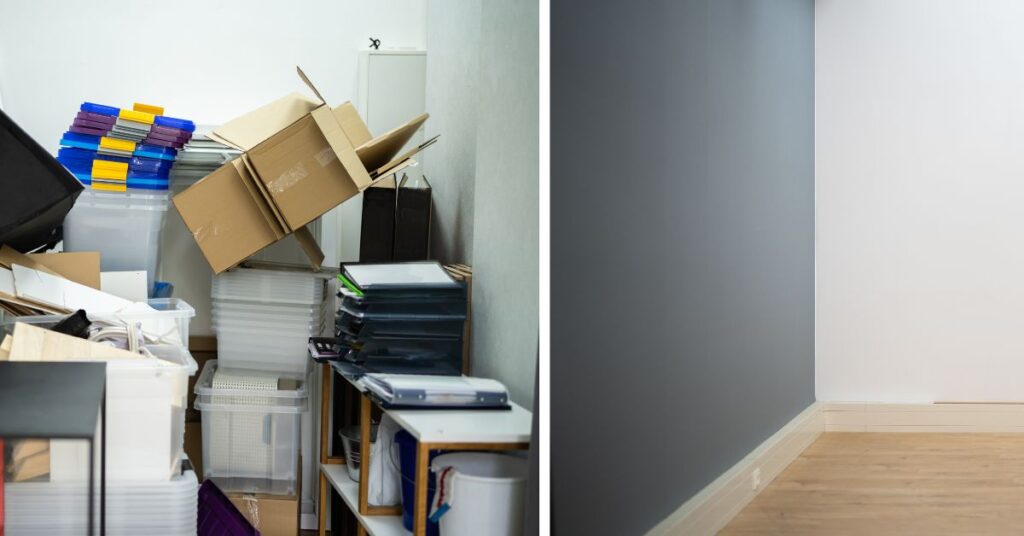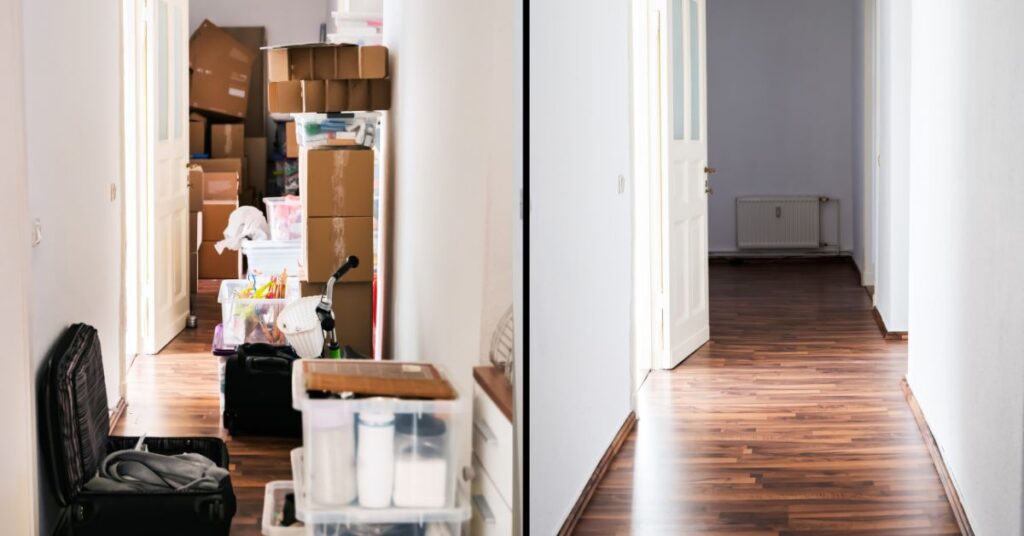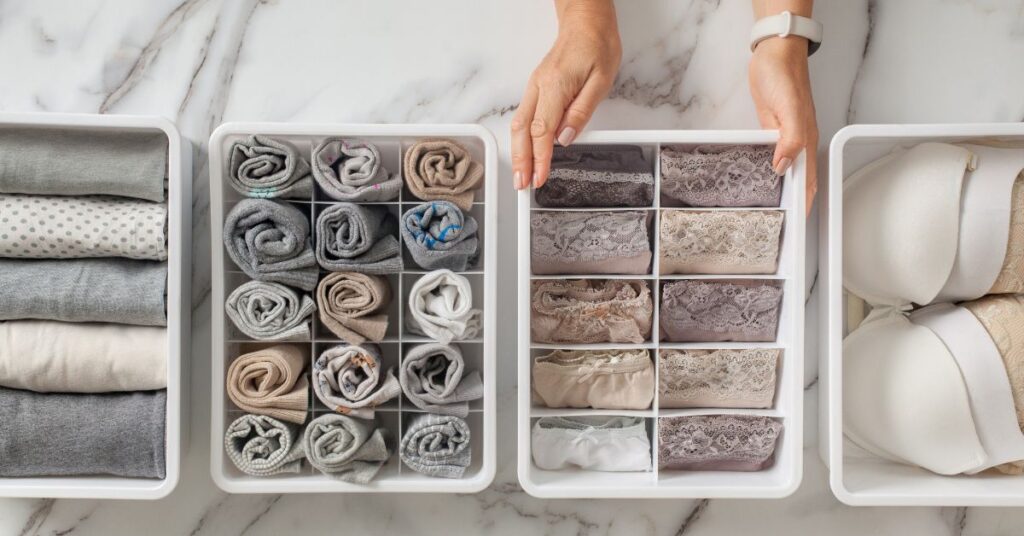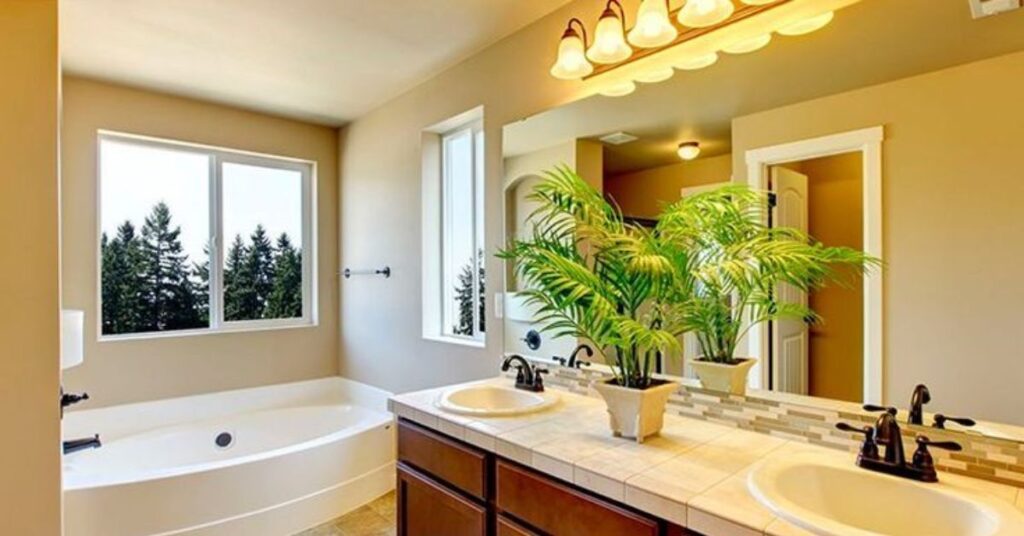Beyond Marie Kondo – The Spiritual Side of Decluttering
In our consumer-driven world, most of us accumulate far more possessions than we actually need or use. While popular decluttering methods focus primarily on organization and efficiency, mindful decluttering goes deeper—addressing the emotional, energetic, and spiritual aspects of our relationship with material objects. This approach recognizes that our possessions carry energy, memories, and emotional attachments that can either support or hinder our well-being.
Mindful decluttering is more than just getting rid of stuff; it’s a transformative practice that helps you create space for what truly matters in your life. When you approach decluttering with consciousness and intention, you’re not just organizing your home—you’re clearing energetic blockages, releasing emotional baggage, and making room for new opportunities and experiences to flow into your life.
This 30-day guide will take you through a gentle, sustainable approach to decluttering that honors both the practical and spiritual aspects of creating an organized, peaceful home. Unlike aggressive purging methods that can feel overwhelming or traumatic, mindful decluttering emphasizes awareness, gratitude, and conscious choice-making throughout the process.
By the end of these 30 days, you’ll not only have a more organized and beautiful living space, but you’ll also have developed a healthier relationship with material possessions and a deeper understanding of what truly brings value to your life.
Table of Contents

Understanding the Energy of Objects
How Possessions Hold and Affect Energy
In many spiritual traditions, objects are understood to hold energy—both from their creation and from the experiences they’ve witnessed. Every item in your home carries an energetic signature that contributes to the overall atmosphere of your space. When you’re surrounded by objects that hold positive memories, serve useful purposes, or bring you joy, they contribute to a harmonious, supportive environment.
However, when your space is filled with items that carry negative associations, represent unfulfilled obligations, or simply no longer serve your current life, they can create energetic heaviness that affects your mood, motivation, and overall well-being. This is why some spaces feel immediately comfortable and welcoming, while others feel chaotic or draining, even when they’re technically clean and organized.
Objects That Typically Hold Positive Energy:
•Items received as gifts from loved ones (when the relationship is positive)
•Handmade objects created with love and intention
•Natural materials like wood, stone, and plants
•Objects associated with happy memories and achievements
•Items that serve a clear, useful purpose in your current life
•Beautiful things that genuinely bring you joy when you see them
Objects That May Hold Challenging Energy:
•Gifts from people with whom you have complicated relationships
•Items inherited from deceased relatives (especially if grief is unresolved)
•Objects associated with difficult periods in your life
•Broken items that represent unfulfilled intentions to repair
•Purchases made during emotional shopping sprees
•Items that represent who you used to be rather than who you are now
Emotional Attachments to Objects
Our relationships with possessions are often complex and emotionally charged. Objects can represent security, identity, memories, aspirations, or fears. Understanding these emotional connections is crucial for mindful decluttering because it helps you make conscious choices rather than reactive decisions.
Common Emotional Attachments:
Security and Scarcity: Many people hold onto items “just in case” they might need them someday. This attachment often stems from experiences of scarcity or insecurity, either personal or generational. While it’s wise to keep some backup items, excessive “just in case” accumulation can create energetic heaviness and prevent new opportunities from flowing into your life.
Identity and Self-Image: We often keep items that represent who we think we should be or who we used to be, rather than who we are now. This might include clothes in sizes we hope to fit again, hobby supplies for activities we no longer enjoy, or books we think we should read but never do.
Guilt and Obligation: Items received as gifts, inherited from family members, or purchased with good intentions can carry feelings of guilt or obligation. We may feel we “should” keep these items out of respect for the giver or to honor our past intentions, even when they no longer serve our current life.
Memory and Nostalgia: Objects connected to important memories or people can be difficult to release, even when they’re no longer functional or beautiful. While it’s natural and healthy to keep some meaningful mementos, excessive attachment to memory objects can keep us stuck in the past rather than present and open to the future.
Signs That Clutter Is Affecting Your Life
Physical Symptoms:
•Feeling overwhelmed or anxious when looking at cluttered areas
•Difficulty finding things you need, leading to frustration and wasted time
•Avoiding certain rooms or areas of your home because they feel chaotic
•Feeling tired or drained after spending time in cluttered spaces
•Physical symptoms like headaches or tension in cluttered environments
Emotional and Mental Effects:
•Difficulty making decisions, even about simple things
•Feeling stuck or unable to move forward in life
•Procrastination and avoidance of tasks or goals
•Shame or embarrassment about the state of your home
•Feeling like your possessions own you rather than the other way around
Relationship and Social Impact:
•Avoiding having guests over because of clutter
•Arguments with family members about organization and cleanliness
•Feeling isolated or disconnected from others
•Difficulty maintaining relationships due to stress and overwhelm
Spiritual and Energetic Signs:
•Feeling disconnected from your intuition or spiritual practice
•Sense that energy in your home feels heavy or stagnant
•Difficulty manifesting goals or attracting positive experiences
•Feeling like you’re living in the past rather than the present

Week 1: Mindful Assessment and Preparation
Day 1-2: Energy Scanning Your Home
Begin your mindful decluttering journey by developing awareness of how different areas of your home feel energetically. This practice helps you identify which spaces need the most attention and understand how clutter affects your well-being.
The Energy Scan Process:
Prepare Your Awareness: Start by taking several deep breaths and setting an intention to observe without judgment. You’re gathering information, not making immediate changes.
Walk Through Each Room: Move slowly through your home, spending 2-3 minutes in each space. Notice your immediate emotional and physical responses. Do you feel energized or drained? Peaceful or anxious? Inspired or overwhelmed?
Identify Energy Patterns: Pay attention to areas where you naturally want to spend time versus spaces you tend to avoid. Notice which rooms feel light and flowing versus heavy and stagnant.
Document Your Observations: Keep a simple journal of your energy scan, noting which areas feel most challenging and which feel most supportive. This will help you prioritize your decluttering efforts.
Day 3-4: Identifying Clutter Hotspots
Common Clutter Accumulation Areas:
Entryways and Transition Zones: These areas often become dumping grounds for mail, keys, bags, and shoes. Clutter here can block the flow of positive energy into your home and create immediate stress when you enter or leave.
Kitchen Counters and Surfaces: Kitchens represent nourishment and abundance, so cluttered counters can symbolically affect your relationship with food, health, and prosperity.
Bedroom Floors and Surfaces: Clutter in bedrooms can interfere with rest, intimacy, and personal renewal. Pay special attention to areas around the bed and on nightstands.
Home Office and Desk Areas: Cluttered workspaces can block productivity, creativity, and career advancement. Even if you don’t work from home, areas where you handle bills and paperwork affect your relationship with money and responsibility.
Storage Areas and Closets: Hidden clutter in closets, basements, and storage areas can create subconscious stress and represent unresolved issues or delayed decisions.
Day 5-6: Setting Intentions for the Process
Creating Your Decluttering Vision:
Visualize Your Ideal Space: Spend time imagining how you want your home to feel when the decluttering process is complete. Focus on feelings and energy rather than just appearance. Do you want your home to feel peaceful? Inspiring? Welcoming? Energizing?
Identify Your Why: Connect with your deeper motivations for decluttering. Are you seeking more peace and calm? Wanting to create space for new opportunities? Hoping to reduce stress and overwhelm? Understanding your why will help you stay motivated when the process becomes challenging.
Set Realistic Goals: While transformation is possible in 30 days, be realistic about what you can accomplish. Focus on progress rather than perfection, and remember that mindful decluttering is about quality of awareness, not speed of completion.
Choose Your Support System: Decide whether you’ll work alone or enlist help from family members or friends. If you choose to involve others, communicate your mindful approach and ask them to respect your process of conscious decision-making.

Day 7: Gathering Supplies and Creating Systems
Essential Decluttering Supplies:
Sorting Containers: Gather boxes, bags, or baskets for sorting items into categories: Keep, Donate, Sell, Recycle, and Trash. Having designated containers makes the process more efficient and helps you see your progress.
Cleaning Supplies: As you clear spaces, you’ll want to clean them thoroughly to refresh the energy. Gather natural cleaning products, microfiber cloths, and any tools you’ll need for deep cleaning.
Documentation Materials: Keep a journal or notebook for recording insights, emotional responses, and decisions during the process. This helps you stay mindful and track your progress.
Comfort Items: Since decluttering can be emotionally challenging, have comfort items available like herbal tea, essential oils, or calming music to support you through difficult moments.
Creating Sustainable Systems:
The One-Touch Rule: Develop the habit of handling items only once when possible. When you pick something up, make a decision about it rather than moving it from pile to pile.
The 24-Hour Rule: For items you’re unsure about, place them in a “maybe” box and revisit them after 24 hours. Often, the initial uncertainty resolves into clarity with a little time and space.
The Gratitude Practice: Before releasing any item, take a moment to acknowledge its service in your life and express gratitude for the role it played, even if that role is now complete.
Week 2: The Gentle Release Process
Day 8-10: Starting with Easy Decisions
Beginning with Low-Emotional-Attachment Items:
Expired and Broken Items: Start your active decluttering with items that require minimal emotional processing: expired medications, broken electronics, worn-out clothing, and outdated paperwork. These decisions are usually straightforward and help build momentum.
Duplicates and Excess: Look for items you have multiples of when you only need one or two. This might include kitchen gadgets, cleaning supplies, or office materials. Keeping the best and releasing the rest is usually an easy decision.
Size and Fit Issues: Address clothing and shoes that no longer fit properly. If items haven’t fit for over a year and you haven’t taken steps to alter them, it’s likely time to release them to someone who can use them now.
The Mindful Decision-Making Process:
Hold Each Item: Physically hold each item you’re considering. Notice your body’s response. Do you feel light and positive, or heavy and resistant? Your body often knows the right decision before your mind does.
Ask Conscious Questions:
•Does this item serve my current life and goals?
•Do I feel joy, neutrality, or resistance when I see/touch this item?
•If I were moving tomorrow, would I pack this item?
•Does keeping this item align with my vision for my ideal space?
Honor the Item’s Service: Before releasing anything, acknowledge the role it played in your life. This might sound like: “Thank you for keeping me warm during that difficult winter. I release you to serve someone else now.”

Day 11-13: Addressing Emotional Attachments
Working with Sentimental Items:
Memory Objects: For items connected to important memories, ask yourself whether the object itself is necessary to preserve the memory. Often, taking a photo of the item allows you to honor the memory while releasing the physical object.
Inherited Items: Objects inherited from family members can carry complex emotions. Remember that honoring someone’s memory doesn’t require keeping all their possessions. Choose a few meaningful items that truly represent your connection to that person.
Gift Guilt: Items received as gifts can create feelings of obligation, especially if the giver is still in your life. Remember that the gift was given with love, and that love doesn’t disappear when you release the physical object. The giver’s intention was your happiness, not your burden.
Aspirational Items: Objects representing who you hoped to become (hobby supplies, exercise equipment, books) can be particularly challenging. Be honest about whether these items represent current goals or past dreams. It’s okay to release items that no longer align with your authentic self.
Emotional Processing Techniques:
The Gratitude Letter: For particularly challenging items, write a letter expressing gratitude for what the item represented or provided. This can help you process emotions and find closure before releasing the object.
The Photo Memory Book: Create a digital or physical album of items you’re releasing but want to remember. This allows you to honor the memory without keeping the physical object.
The Blessing Ritual: Before releasing items with strong emotional attachments, hold them and consciously send them love and blessings for their next chapter. This helps you release with positive energy rather than guilt or sadness.
Day 14: Mid-Process Reflection and Adjustment
Assessing Your Progress:
Energy Check-In: Walk through the areas you’ve already addressed and notice how they feel compared to your initial energy scan. Most people report feeling lighter and more peaceful in decluttered spaces, even when the process isn’t complete.
Emotional Processing: Acknowledge any emotions that have come up during the first week of active decluttering. It’s normal to feel sadness, anxiety, or even grief when releasing possessions. These feelings are part of the healing process.
Adjusting Your Approach: If you’re feeling overwhelmed, slow down and work in smaller increments. If you’re energized and want to do more, maintain your mindful approach rather than rushing through decisions.
Celebrating Small Wins: Acknowledge the progress you’ve made, even if it feels small. Every conscious decision to release something that no longer serves you is a step toward greater freedom and clarity.
Week 3: Creating Sacred Organization
Day 15-17: Organizing with Intention and Beauty
Principles of Mindful Organization:
Everything Has a Home: Once you’ve decided what to keep, ensure every item has a designated place where it belongs. This prevents future clutter accumulation and makes it easy to maintain organization.
Beauty and Function Together: Choose organizational systems that are both functional and beautiful. When storage solutions are attractive, you’re more likely to maintain them, and they contribute to the overall harmony of your space.
Accessibility and Flow: Organize items based on how frequently you use them and how they flow together in your daily routines. Frequently used items should be easily accessible, while occasional-use items can be stored in less convenient locations.
Room-by-Room Organization Strategies:
Kitchen Organization: Group similar items together (all baking supplies, all cleaning products) and store them near where they’re used. Keep counters clear except for items used daily. Use beautiful containers for bulk items to create visual harmony.
Bedroom Organization: Organize clothing by category and season, keeping current-season items most accessible. Use drawer dividers for small items and ensure your nightstand contains only items that support rest and relaxation.
Living Room Organization: Create designated homes for remote controls, magazines, and other frequently used items. Use attractive baskets or containers to corral items while maintaining the room’s peaceful atmosphere.
Bathroom Organization: Group products by function and use containers to prevent clutter on counters. Keep only current products visible and store backups in cabinets or closets.

Day 18-20: Using Feng Shui Principles in Organization
Energy Flow Considerations:
Clear Pathways: Ensure that energy (and people) can flow smoothly through your spaces. Avoid blocking doorways or creating narrow passages between furniture and storage.
Balance and Symmetry: When possible, create visual balance in your organization. This doesn’t mean everything must be perfectly symmetrical, but aim for a sense of harmony and proportion.
Natural Materials: Choose organizational containers and systems made from natural materials when possible. Wood, bamboo, cotton, and other natural materials support positive energy flow better than plastic or synthetic materials.
Integration with Existing Feng Shui:
If you’re already implementing feng shui principles in your home, ensure your organization supports rather than conflicts with these arrangements. For comprehensive guidance on feng shui principles for every room, including how organization supports energy flow, explore our complete feng shui guide for beginners.
Color and Visual Harmony: Choose organizational systems in colors that support the energy you want to create in each space. Calming colors for bedrooms, energizing colors for workspaces, and harmonious colors for common areas.
Day 21: Maintaining Energy Flow in Storage
Hidden Storage Considerations:
Closet Energy: Even though closets are hidden, their organization affects the energy of the rooms they serve. Keep closets organized and clutter-free to support the overall harmony of your space.
Under-Bed Storage: If you must store items under beds, choose soft items like linens rather than hard objects or anything related to work or stress. Better yet, keep the space under beds completely clear to allow energy to flow freely around you while sleeping.
Basement and Attic Storage: These areas often become dumping grounds for items we don’t want to deal with. Apply the same mindful principles to these spaces, keeping only items you truly need and organizing them thoughtfully.
Seasonal Storage Systems:
Rotation Schedules: Create systems for rotating seasonal items like clothing, decorations, and outdoor equipment. This keeps your active living spaces uncluttered while ensuring you can access seasonal items when needed.
Clear Labeling: Label storage containers clearly so you can find items without creating chaos. Include dates when items were stored to help you identify things that may no longer be needed.
Regular Review: Schedule annual or bi-annual reviews of stored items to ensure they still serve your life and haven’t become forgotten clutter.

Week 4: Sustaining Your Clutter-Free Life
Day 22-24: Daily Habits for Maintaining Clarity
The 10-Minute Daily Reset:
Morning Intention: Start each day by spending 2-3 minutes tidying one small area while setting positive intentions for the day. This might be making your bed mindfully, clearing your kitchen counter, or organizing your desk.
Evening Gratitude: End each day by spending 5-7 minutes returning items to their designated homes while expressing gratitude for your space and possessions. This practice maintains organization while cultivating appreciation.
One-In-One-Out Rule: When you bring new items into your home, consciously choose something to release. This prevents accumulation and keeps you mindful of your consumption habits.
Weekly Maintenance Rituals:
The 15-Minute Friday: Spend 15 minutes each Friday doing a quick declutter of one area that tends to accumulate items during the week. This might be your entryway, kitchen counter, or desk area.
Sunday Space Blessing: Once a week, walk through your home with appreciation and gratitude, perhaps burning sage or palo santo to refresh the energy. This practice helps you stay connected to your space and notice areas that need attention.
Day 25-27: Mindful Consumption Practices
Conscious Shopping Habits:
The 24-Hour Rule: Before making non-essential purchases, wait 24 hours and ask yourself whether you truly need the item or if you’re shopping for emotional reasons.
Quality Over Quantity: Choose to invest in fewer, higher-quality items rather than accumulating many inexpensive things. Quality items last longer, function better, and often bring more satisfaction.
Multipurpose Preferences: When possible, choose items that serve multiple functions rather than single-purpose gadgets or tools. This reduces overall accumulation while maximizing utility.
Emotional Shopping Awareness:
Identifying Triggers: Notice what emotions or situations trigger impulse shopping. Common triggers include stress, boredom, sadness, or social pressure. Developing awareness of these patterns helps you make more conscious choices.
Alternative Activities: Develop a list of alternative activities for times when you feel the urge to shop emotionally. This might include taking a walk, calling a friend, practicing meditation, or engaging in a creative hobby.
Gratitude Practice: Before shopping, spend a few minutes appreciating what you already have. This practice often reduces the desire to acquire new things and helps you shop from a place of abundance rather than scarcity.
Day 28-30: Creating Boundaries with New Acquisitions
Gift and Invitation Policies:
Communicating Preferences: Let friends and family know about your commitment to mindful living. You might suggest experiences as gifts rather than objects, or ask for consumable items like food, flowers, or services.
Gracious Declining: Develop comfortable ways to decline offers of items from others, whether they’re gifts, hand-me-downs, or things people are trying to get rid of. You can express gratitude for the thought while politely declining.
Seasonal Boundaries:
Holiday Decorations: Approach holiday and seasonal decorating mindfully, choosing a few meaningful items rather than accumulating extensive collections. Store seasonal items in clearly labeled containers and review them annually.
Children’s Items: If you have children, involve them in age-appropriate decluttering activities and teach them mindful consumption habits. Set limits on toy accumulation and encourage them to donate items they’ve outgrown.
Long-Term Sustainability:
Annual Reviews: Schedule annual decluttering sessions to address accumulation and reassess your possessions. As your life changes, your possessions should evolve to support your current reality.
Community Connections: Build relationships with local donation centers, consignment shops, and community groups where you can easily pass along items you no longer need. Having established channels for releasing items makes the process easier.

Special Situations: Sentimental Items and Shared Spaces
Dealing with Inherited Items
Honoring Without Hoarding:
Selective Preservation: Choose a few truly meaningful items that represent your connection to the deceased person, rather than feeling obligated to keep everything. Quality of meaning matters more than quantity of objects.
Creative Memorialization: Consider creative ways to honor someone’s memory without keeping all their possessions. This might include creating a memory book, donating items to causes they cared about, or repurposing meaningful objects into new forms.
Family Negotiations: When multiple family members are involved in inheritance decisions, approach conversations with compassion and understanding. Everyone processes grief differently, and some may need more time before they’re ready to release items.
Healing and Closure: Use the process of sorting inherited items as an opportunity for healing and closure. Share stories about the person and the objects, and allow emotions to flow naturally during the process.
Decluttering with Family Members
Collaborative Approaches:
Shared Vision: Work together to create a shared vision for your home that everyone can support. Focus on how you want your space to feel rather than specific organizational systems.
Individual Responsibility: While working toward shared goals, maintain individual responsibility for personal belongings. Each family member should make decisions about their own possessions rather than making decisions for others.
Compromise and Patience: Recognize that family members may have different relationships with possessions and different timelines for change. Practice patience and find compromises that work for everyone.
Teaching Opportunities: Use family decluttering as an opportunity to teach children about mindful consumption, gratitude, and the difference between needs and wants.
Creating Compromise in Shared Spaces
Negotiating Different Styles:
Common Ground: Focus on areas of agreement, such as wanting a peaceful, functional home, even if you have different ideas about how to achieve that goal.
Designated Spaces: Allow each family member to have some personal space that reflects their individual style and needs, while maintaining shared standards for common areas.
Trial Periods: When family members disagree about organizational systems or decluttering decisions, agree to try one approach for a specific period before evaluating its effectiveness.
Professional Support: If family conflicts around clutter and organization are significant, consider working with a professional organizer or family counselor who can help mediate discussions and provide neutral guidance.
The Energetic Benefits: What to Expect
Physical Changes in Your Space
Improved Air Quality and Flow: Decluttered spaces often feel fresher and more breathable. With fewer objects to collect dust and block air circulation, your home’s physical environment becomes healthier and more comfortable.
Enhanced Natural Light: Removing excess items from windowsills, surfaces, and floors allows natural light to flow more freely through your space, creating a brighter, more uplifting atmosphere.
Easier Cleaning and Maintenance: With fewer objects to clean around and organize, maintaining your home becomes significantly easier and less time-consuming, freeing up energy for other activities.
Better Functionality: When everything has a designated home and surfaces are clear, your space functions more efficiently, reducing daily stress and frustration.

Emotional and Mental Clarity
Reduced Decision Fatigue: With fewer possessions to manage and organize, you’ll experience less daily decision fatigue, leaving more mental energy for important choices and creative pursuits.
Decreased Anxiety: Many people report feeling significantly less anxious and overwhelmed after decluttering their homes. The visual calm of organized spaces often translates to mental calm.
Improved Focus: Cluttered environments can be mentally distracting. Clear spaces support better concentration and productivity, whether you’re working, relaxing, or pursuing hobbies.
Enhanced Creativity: Physical space often translates to mental space. Many people find that decluttering their homes opens up new creative possibilities and inspiration.
Improved Relationships and Productivity
Better Communication: Organized, peaceful homes often support better family communication and less conflict over lost items, messy spaces, or household responsibilities.
Increased Hospitality: When your home feels organized and welcoming, you’re more likely to invite friends and family over, strengthening social connections and community.
Enhanced Productivity: Whether you work from home or just manage household tasks, organized spaces support greater efficiency and effectiveness in all your activities.
Better Sleep and Rest: Decluttered bedrooms often lead to improved sleep quality, as the peaceful environment supports relaxation and rest.

Enhanced Spiritual Connection
Clearer Intuition: Many people report that decluttering their physical space helps clear mental and emotional clutter as well, making it easier to access intuition and inner wisdom.
Improved Meditation and Spiritual Practice: Peaceful, organized spaces naturally support meditation, prayer, and other spiritual practices by reducing distractions and creating sacred atmosphere.
Greater Gratitude: The process of mindfully choosing what to keep often increases appreciation for the possessions and experiences you value most.
Increased Manifestation: When your space is clear and organized, many people find it easier to visualize and manifest their goals and dreams, as if the physical clarity supports mental and spiritual clarity as well.
Your Ongoing Journey of Mindful Living
Completing this 30-day mindful decluttering journey is just the beginning of a new relationship with your possessions and your space. The skills you’ve developed—conscious decision-making, gratitude practice, and awareness of energy—will serve you well beyond this initial transformation. Mindful decluttering is not a one-time event but an ongoing practice that supports your evolving life and goals.
As you continue forward, remember that the goal is not perfection but consciousness. There will be times when clutter accumulates again, when you make purchases you later regret, or when life circumstances make organization challenging. These moments are opportunities to practice self-compassion and return to the mindful principles you’ve learned.
The transformation you’ve experienced goes far beyond having a tidier home. You’ve developed a deeper understanding of what truly brings value to your life, strengthened your ability to make conscious choices, and created space—both physical and energetic—for new opportunities and experiences to flow into your life.
Your home is now more than just a place to store your possessions; it’s a reflection of your values, a support for your well-being, and a foundation for your dreams. As you continue to live mindfully, your space will continue to evolve with you, always supporting your highest good and deepest aspirations.
For comprehensive guidance on arranging your newly decluttered space for optimal energy flow and harmony, including feng shui principles for every room, explore our complete feng shui guide for beginners. Transform not just the organization of your home, but the very energy that flows through it.
Remember: every conscious choice you make about your possessions is a step toward greater freedom, clarity, and joy. Your mindful home awaits, ready to support the beautiful life you’re creating.
REFERENCES
Kondo, Marie. “The Life-Changing Magic of Tidying Up.” Ten Speed Press, 2014.
Kingston, Karen. “Clear Your Clutter with Feng Shui.” Broadway Books, 1999.
Becker, Joshua. “The More of Less: Finding the Life You Want Under Everything You Own.” WaterBrook, 2016.
UCLA Center for Everyday Lives and Families. “Life at Home in the Twenty-First Century.” https://www.celf.ucla.edu/
